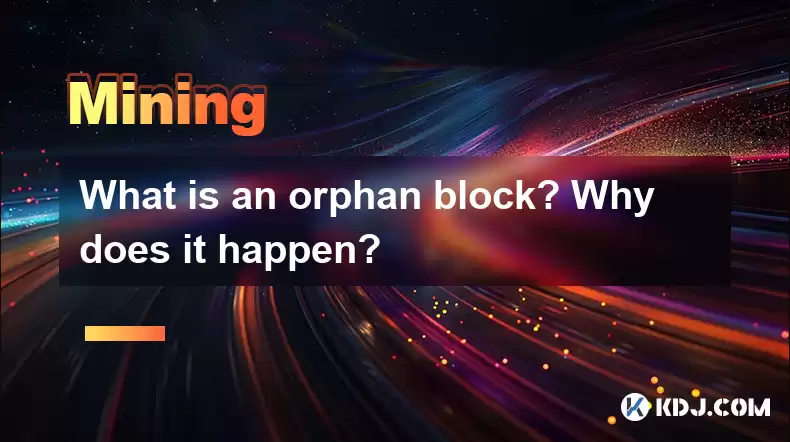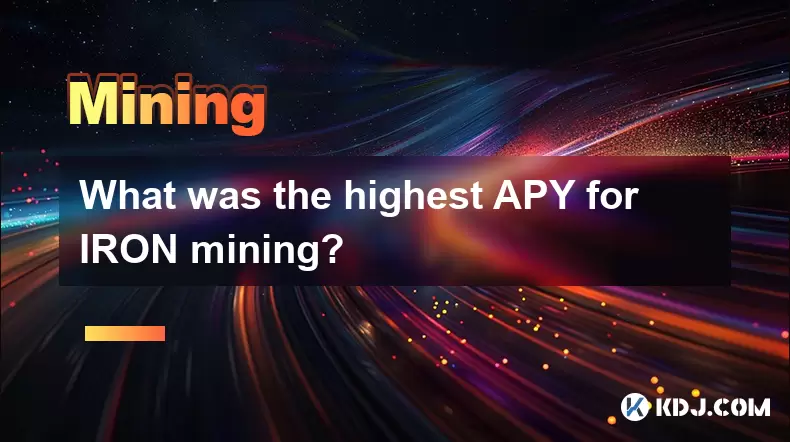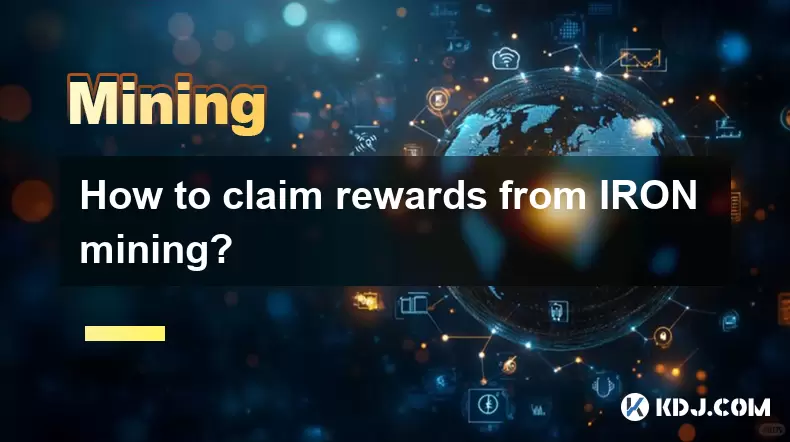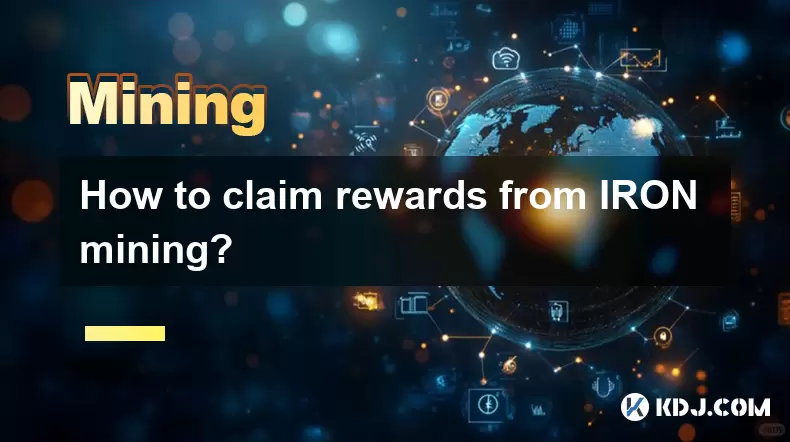-
 Bitcoin
Bitcoin $114400
0.68% -
 Ethereum
Ethereum $3550
2.48% -
 XRP
XRP $3.001
4.99% -
 Tether USDt
Tether USDt $0.9999
0.01% -
 BNB
BNB $757.6
1.46% -
 Solana
Solana $162.9
1.07% -
 USDC
USDC $0.9998
0.00% -
 TRON
TRON $0.3294
0.91% -
 Dogecoin
Dogecoin $0.2015
2.46% -
 Cardano
Cardano $0.7379
2.01% -
 Stellar
Stellar $0.4141
8.83% -
 Hyperliquid
Hyperliquid $37.83
-1.91% -
 Sui
Sui $3.454
0.76% -
 Chainlink
Chainlink $16.62
3.53% -
 Bitcoin Cash
Bitcoin Cash $554.6
2.84% -
 Hedera
Hedera $0.2486
3.91% -
 Ethena USDe
Ethena USDe $1.001
0.00% -
 Avalanche
Avalanche $21.95
3.34% -
 Toncoin
Toncoin $3.563
-2.85% -
 Litecoin
Litecoin $112.7
2.65% -
 UNUS SED LEO
UNUS SED LEO $8.977
0.13% -
 Shiba Inu
Shiba Inu $0.00001232
1.85% -
 Uniswap
Uniswap $9.319
2.93% -
 Polkadot
Polkadot $3.632
1.38% -
 Monero
Monero $307.2
2.36% -
 Dai
Dai $0.9997
-0.03% -
 Bitget Token
Bitget Token $4.340
0.91% -
 Pepe
Pepe $0.00001048
1.07% -
 Cronos
Cronos $0.1348
3.26% -
 Aave
Aave $261.5
1.93%
What is an orphan block? Why does it happen?
Orphan blocks in blockchain are mined but discarded when another block at the same height is added to the chain, affecting network security and miner rewards.
Apr 16, 2025 at 09:21 pm

An orphan block is a term used in the cryptocurrency world, particularly in the context of blockchain technology. It refers to a block that has been mined and added to the blockchain but is later discarded or replaced by another block at the same height. This phenomenon is crucial to understanding the mechanics and potential vulnerabilities of blockchain systems.
What is an Orphan Block?
In the realm of blockchain technology, a block is a collection of transactions that are verified and added to the blockchain. When a miner successfully solves the cryptographic puzzle required to add a new block, that block is broadcast to the network. However, due to the decentralized nature of blockchain, multiple miners might solve the puzzle at nearly the same time, leading to the creation of multiple blocks at the same height. The block that gets added to the longest chain becomes part of the blockchain, while the others are considered orphan blocks.
Why Do Orphan Blocks Happen?
Orphan blocks occur due to the inherent characteristics of blockchain networks, particularly those that use a Proof of Work (PoW) consensus mechanism. Here are the primary reasons why orphan blocks happen:
Network Latency: The time it takes for a newly mined block to propagate across the network can lead to orphan blocks. If two miners solve the puzzle almost simultaneously, but one miner's block reaches more nodes first, the other block might be orphaned.
Simultaneous Mining: When multiple miners solve the puzzle at roughly the same time, the network might temporarily fork into different branches. The branch with the most cumulative work (usually the longest chain) will be accepted, and the other branches will result in orphan blocks.
Blockchain Forks: Temporary forks in the blockchain can occur due to disagreements among nodes about the validity of transactions or blocks. These forks can lead to orphan blocks when the network eventually resolves the conflict and chooses one branch over the others.
Impact of Orphan Blocks on the Network
Orphan blocks have several implications for the blockchain network:
Security: Orphan blocks can affect the security of the blockchain. If a malicious actor were to create a fork with the intention of double-spending, the existence of orphan blocks could make it easier to achieve this goal.
Miner Rewards: Miners who mine an orphan block do not receive the block reward or transaction fees associated with that block. This can impact their profitability and may influence their mining strategies.
Network Efficiency: Frequent orphan blocks can lead to inefficiencies in the network, as they require additional computational resources to resolve conflicts and maintain consensus.
How to Minimize Orphan Blocks
While it is impossible to completely eliminate orphan blocks, there are strategies that can be employed to minimize their occurrence:
Improved Network Infrastructure: Enhancing the speed and reliability of the network can reduce the likelihood of orphan blocks. This includes using better internet connections and optimizing the software that nodes use to communicate.
Block Propagation Protocols: Implementing protocols that speed up block propagation, such as Compact Block Relay, can help ensure that blocks are distributed across the network more quickly, reducing the chance of simultaneous mining.
Adjusting Block Times: Some blockchains adjust the time between blocks to balance the trade-off between security and efficiency. Shorter block times can increase the frequency of orphan blocks, while longer block times can decrease it.
Real-World Examples of Orphan Blocks
To better understand orphan blocks, let's look at some real-world examples:
Bitcoin: In the Bitcoin network, orphan blocks are relatively rare due to the robust infrastructure and large number of nodes. However, they do occur, and they can be observed in the blockchain explorer tools available online.
Ethereum: Ethereum, another major blockchain, also experiences orphan blocks. The Ethereum network has implemented various upgrades to reduce the frequency of orphan blocks, including changes to its consensus mechanism.
Litecoin: Litecoin, a fork of Bitcoin, has a faster block time than Bitcoin, which can lead to a higher rate of orphan blocks. The Litecoin community has taken steps to mitigate this issue through network optimizations.
Technical Details of Orphan Blocks
Understanding the technical aspects of orphan blocks can provide deeper insights into their nature and impact:
Block Height: Orphan blocks have the same block height as the block that ultimately gets added to the blockchain. This is because they are competing for the same position in the chain.
Hash Rate: The hash rate of the network can influence the frequency of orphan blocks. A higher hash rate means more miners are competing to solve the puzzle, which can increase the likelihood of simultaneous mining.
Blockchain Explorer: Blockchain explorers are tools that allow users to view the details of blocks, including orphan blocks. They can show the timestamp, miner, and transactions associated with an orphan block, providing valuable data for analysis.
Frequently Asked Questions
Q: Can orphan blocks be re-added to the blockchain later?
A: No, once a block is orphaned, it cannot be re-added to the blockchain. It remains a part of the network's history but is not considered valid in the current state of the blockchain.
Q: Do all blockchain networks experience orphan blocks?
A: Yes, any blockchain network that uses a consensus mechanism like Proof of Work can experience orphan blocks. However, the frequency and impact can vary depending on the network's design and infrastructure.
Q: How do orphan blocks affect the overall security of a blockchain?
A: Orphan blocks can potentially weaken the security of a blockchain by making it easier for malicious actors to create temporary forks and attempt double-spending. However, robust network design and consensus mechanisms can mitigate these risks.
Q: Can miners predict or prevent orphan blocks?
A: Miners cannot predict orphan blocks with certainty, but they can take steps to minimize their occurrence, such as improving their network connections and using optimized block propagation protocols.
Disclaimer:info@kdj.com
The information provided is not trading advice. kdj.com does not assume any responsibility for any investments made based on the information provided in this article. Cryptocurrencies are highly volatile and it is highly recommended that you invest with caution after thorough research!
If you believe that the content used on this website infringes your copyright, please contact us immediately (info@kdj.com) and we will delete it promptly.
- Cryptocurrency, Altcoins, and Profit Potential: Navigating the Wild West
- 2025-08-04 14:50:11
- Blue Gold & Crypto: Investing Disruption in Precious Metals
- 2025-08-04 14:30:11
- Japan, Metaplanet, and Bitcoin Acquisition: A New Era of Corporate Treasury?
- 2025-08-04 14:30:11
- Coinbase's Buy Rating & Bitcoin's Bold Future: A Canaccord Genuity Perspective
- 2025-08-04 14:50:11
- Coinbase's Buy Rating Maintained by Rosenblatt Securities: A Deep Dive
- 2025-08-04 14:55:11
- Cryptos, Strategic Choices, High Returns: Navigating the Meme Coin Mania
- 2025-08-04 14:55:11
Related knowledge

What was the highest APY for IRON mining?
Jul 23,2025 at 05:14am
Understanding IRON Token and Its Mining MechanismThe IRON token is a stablecoin that operates within the Iron Finance ecosystem, primarily on blockcha...

What is impermanent loss in IRON pools?
Jul 23,2025 at 09:00am
Understanding Impermanent Loss in the Context of IRON PoolsImpermanent loss is a phenomenon that affects liquidity providers in decentralized finance ...

How to claim rewards from IRON mining?
Jul 23,2025 at 02:21pm
Understanding IRON Mining and Reward MechanismsIRON Finance operated as a decentralized finance (DeFi) protocol on the Polygon and Binance Smart Chain...

How to claim rewards from IRON mining?
Jul 29,2025 at 05:07am
Understanding IRON Mining and Reward MechanismIRON is a dual-token system designed to stabilize the value of a synthetic asset through a combination o...

IRON mining tutorial for beginners
Jul 27,2025 at 12:01am
What Is IRON and How Does It Work in the Cryptocurrency Ecosystem?IRON is a cryptocurrency token that operates on the Binance Smart Chain (BSC) and is...

How to calculate APY for IRON mining?
Jul 28,2025 at 09:49am
Understanding APY in the Context of IRON Token MiningWhen engaging in IRON token mining within decentralized finance (DeFi) platforms, Annual Percenta...

What was the highest APY for IRON mining?
Jul 23,2025 at 05:14am
Understanding IRON Token and Its Mining MechanismThe IRON token is a stablecoin that operates within the Iron Finance ecosystem, primarily on blockcha...

What is impermanent loss in IRON pools?
Jul 23,2025 at 09:00am
Understanding Impermanent Loss in the Context of IRON PoolsImpermanent loss is a phenomenon that affects liquidity providers in decentralized finance ...

How to claim rewards from IRON mining?
Jul 23,2025 at 02:21pm
Understanding IRON Mining and Reward MechanismsIRON Finance operated as a decentralized finance (DeFi) protocol on the Polygon and Binance Smart Chain...

How to claim rewards from IRON mining?
Jul 29,2025 at 05:07am
Understanding IRON Mining and Reward MechanismIRON is a dual-token system designed to stabilize the value of a synthetic asset through a combination o...

IRON mining tutorial for beginners
Jul 27,2025 at 12:01am
What Is IRON and How Does It Work in the Cryptocurrency Ecosystem?IRON is a cryptocurrency token that operates on the Binance Smart Chain (BSC) and is...

How to calculate APY for IRON mining?
Jul 28,2025 at 09:49am
Understanding APY in the Context of IRON Token MiningWhen engaging in IRON token mining within decentralized finance (DeFi) platforms, Annual Percenta...
See all articles

























































































